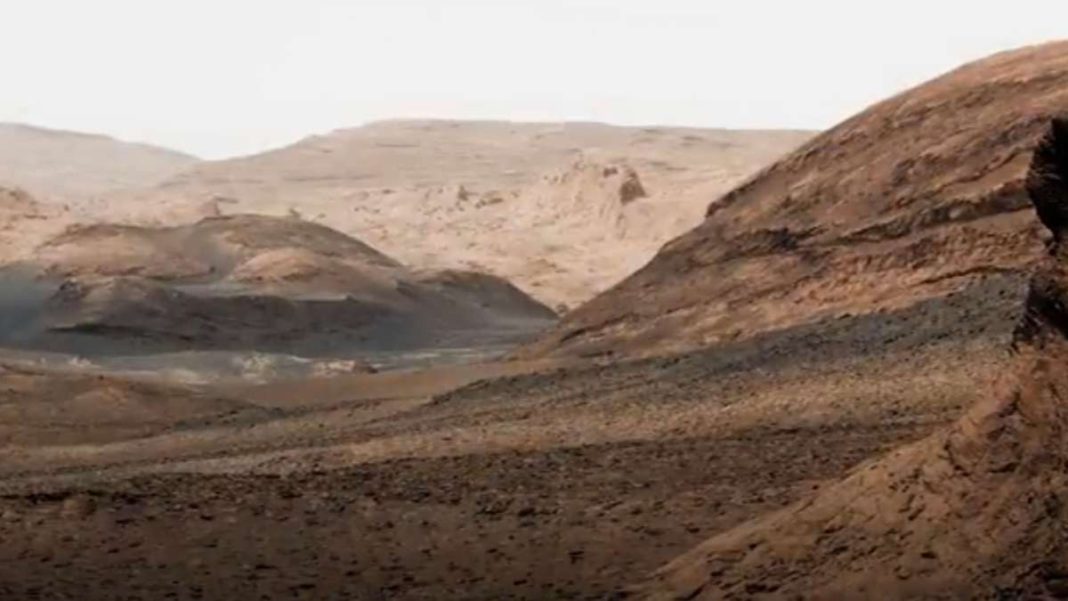UNITED STATES: NASA’s InSight lander has unveiled a momentous finding on the Red Planet. It has identified the most extensive seismic event ever recorded on Mars, casting new illumination on the planet’s seismic phenomena. The magnitude 4.7 tremor on Mars, though modest compared to Earth’s standards, represents a significant seismic occurrence on our neighbouring planet. Mars differs from Earth in that it lacks the plate tectonics responsible for terrestrial earthquakes.
Initially, scientists considered the possibility of a meteorite impact as the cause of this unconventional “marsquake.” Nevertheless, a thorough search for an impact crater yielded no concrete evidence.
This has led researchers to a ground-breaking deduction: the sizeable quake was not a result of external factors but was initiated by tectonic movements deep within the Martian interior. This discovery unravels a concealed world of subterranean disturbances and provides invaluable insights into the forces that prompt Mars to tremble and shift.
“We have established that the most substantial marsquake detected by InSight was of tectonic origin rather than an impact. This is a pivotal revelation as it demonstrates that Mars’ faults are capable of generating significant seismic events,” affirmed planetary scientist Ben Fernando from the University of Oxford, who led the research recently published in the journal Geophysical Research Letters.
This revelation signifies a substantial stride in our comprehension of Martian seismic events, taking us closer to deciphering the planet’s tectonic dynamics. Constantinos Charalambous, co-chair of InSight’s Geology Working Group at Imperial College London, remarked, “Initially, we believed this event might be the result of an impact. This marks a substantial advancement in our understanding of seismic events on Mars, edging us closer to comprehending the planet’s tectonic processes.”
In 2022, NASA’s InSight mission, spanning four years, concluded, having recorded a total of 1,319 marsquakes during its tenure on Mars. These marsquakes, unlike those on Earth caused by the motion of tectonic plates, have captivated scientists due to Mars’ monolithic, unsegmented crust.
According to Fernando, “Mars still harbours active faults. The planet is in a gradual state of contraction and cooling, and movement persists within the crust, even in the absence of active plate tectonics. These faults can incite seismic events.”
Researchers have pinpointed the epicentre of the magnitude 4.7 quake in the Al-Qahira Vallis region, located in the southern Martian hemisphere, approximately 1,200 miles south-east of InSight’s location just north of the equator. They suspect that the quake originated several dozen miles beneath the surface.
While the majority of previous marsquakes were linked to the Cerberus Fossae region to the east of InSight, the source of this substantial quake left scientists perplexed. No discernible surface features suggested ongoing tectonic processes that could have induced such a robust seismic event.
Furthermore, the energy released during this specific marsquake surpassed the combined energy of all other marsquakes recorded by InSight. Initially, scientists considered the possibility of a resemblance to two meteorite impacts previously detected by InSight, resulting in craters approximately 500 feet wide. Nevertheless, a thorough investigation ruled out this hypothesis.
The absence of a crater associated with this significant marsquake is a significant milestone in the interpretation of seismic signals on Mars, accentuating the enigmatic nature of seismic activity on the Red Planet.
In preparation for future human missions to Mars, understanding Martian seismic activity becomes increasingly pertinent. Charalambous emphasized, “Each seismic event detected by InSight contributes a valuable piece to the puzzle. This specific event plays an indispensable role in unraveling the geological history of the Red Planet, shedding light on its interior and evolution. Furthermore, it provides vital insights into the distribution of seismic activity on Mars, a crucial consideration for planning future human missions to the planet.”
Also Read: SpaceX Successfully Deploys 22 Starlink Satellites in Record-breaking Mission



